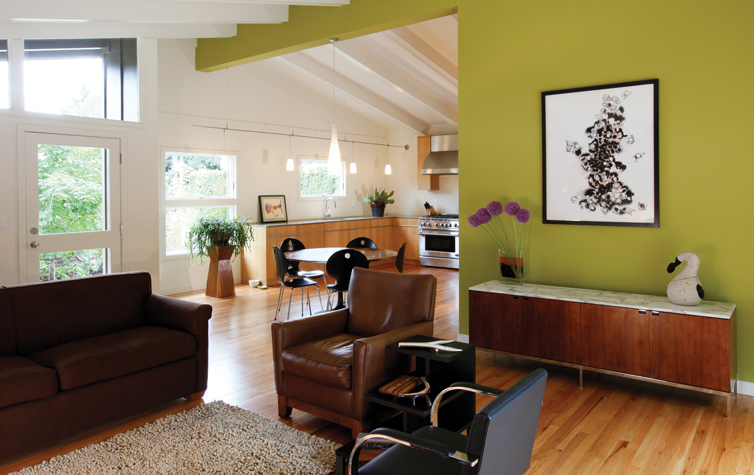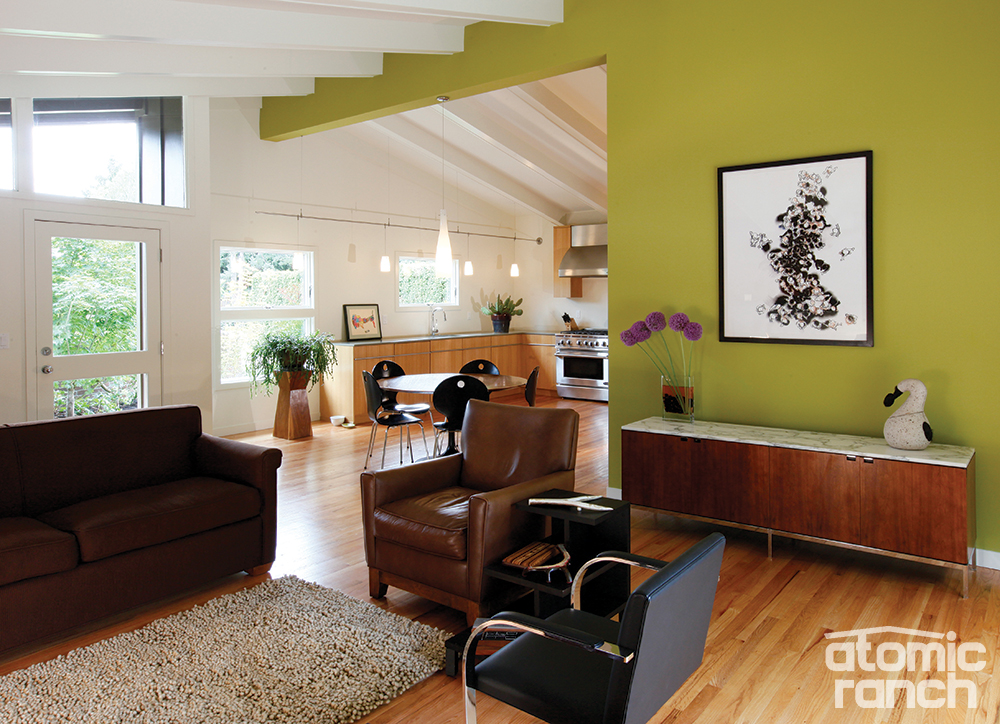
From the archives: This story was originally featured in our Spring 2011 issue.
You’d be surprised at how long some features take to come to fruition here at Atomic Ranch. Those montages of a cub reporter dictating a breaking story from a phone booth to the grizzled city editor, cut to a speeding press and the printed package that arrives at your doorstep the next morning—well, it’s nothing like that. And when you realize that many of the homes that constitute this magazine’s meat and potatoes are 40 to 50 years old, it’s only right that our stories take a little while to develop, too.
A prime example of this process is the home of Shannon Spence and Jeanne Tobey, two Realtors who renovated a 1954 ranch in the Reed neighborhood of Portland, Oregon. The couple purchased the home in 2007 and began an extensive down-to-the-studs renovation. Driving around Reed, a mix of both modern and traditional brick hip-roof ranches built by developer Way Lee, I spotted this home still under construction in 2008. With its bright orange front door, it loudly promised a cool midcentury update.
I rarely do this, but that day I boldly approached the contractor and slipped him my card. I thought maybe this house, if everything turned out right, might be an Atomic Ranch feature. Occasionally I’d drive by the home, watching the progress, until finally it was ready to be photographed in June 2009. From first contact to now, it’s a little shy of three years that this feature has taken to get to your mailbox.
But inside it wasn’t a slow process. “Hats off to Brad,” Spence says, referring to their contractor, Brad Lackey. “He knew we were paying two mortgages every day we weren’t in this house. He had the subs hustling to keep up with him; we never missed a day waiting for someone to show up.”
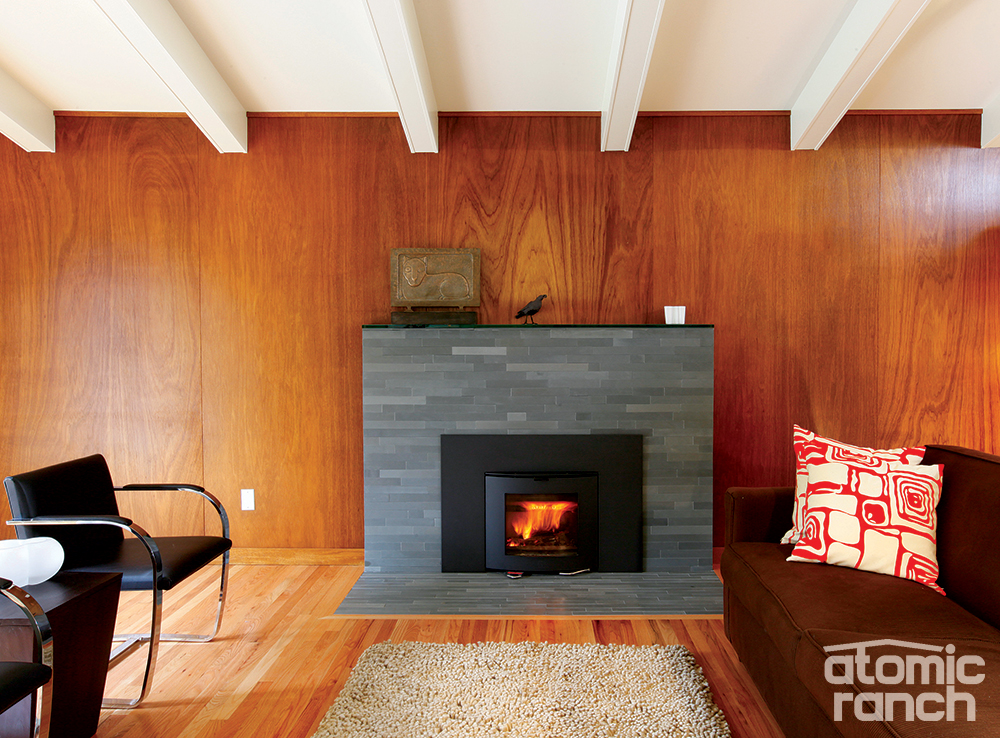
Spence toured his first Rummer some 15 years ago and recognized how ranches successfully linked outside and inside, and that one wasn’t isolated from the site by a second story. But he also admits that California ranches with slab floors and vaulted ceilings don’t work as well with the colder winters of Oregon.
“Both ’20s and ’50s houses are considered by home inspectors to be the very best because both were built after a big war, with a surplus of men and materials,” Spence comments. “There are stories of carpenters and roofers getting a huge box of nails and being told they had to use them up every day.”
It was the flat lot, single-level and volume of the main room, as well as how the inside and outside communicated with each other, that brought the couple to this modest L-shaped ranch. Coming from a 1950s duplex they loved, designed by modernist architect Kenneth Birkemeier, the couple felt this new house put them in a great neighborhood close to downtown—a big deal in bike-centric Portland.
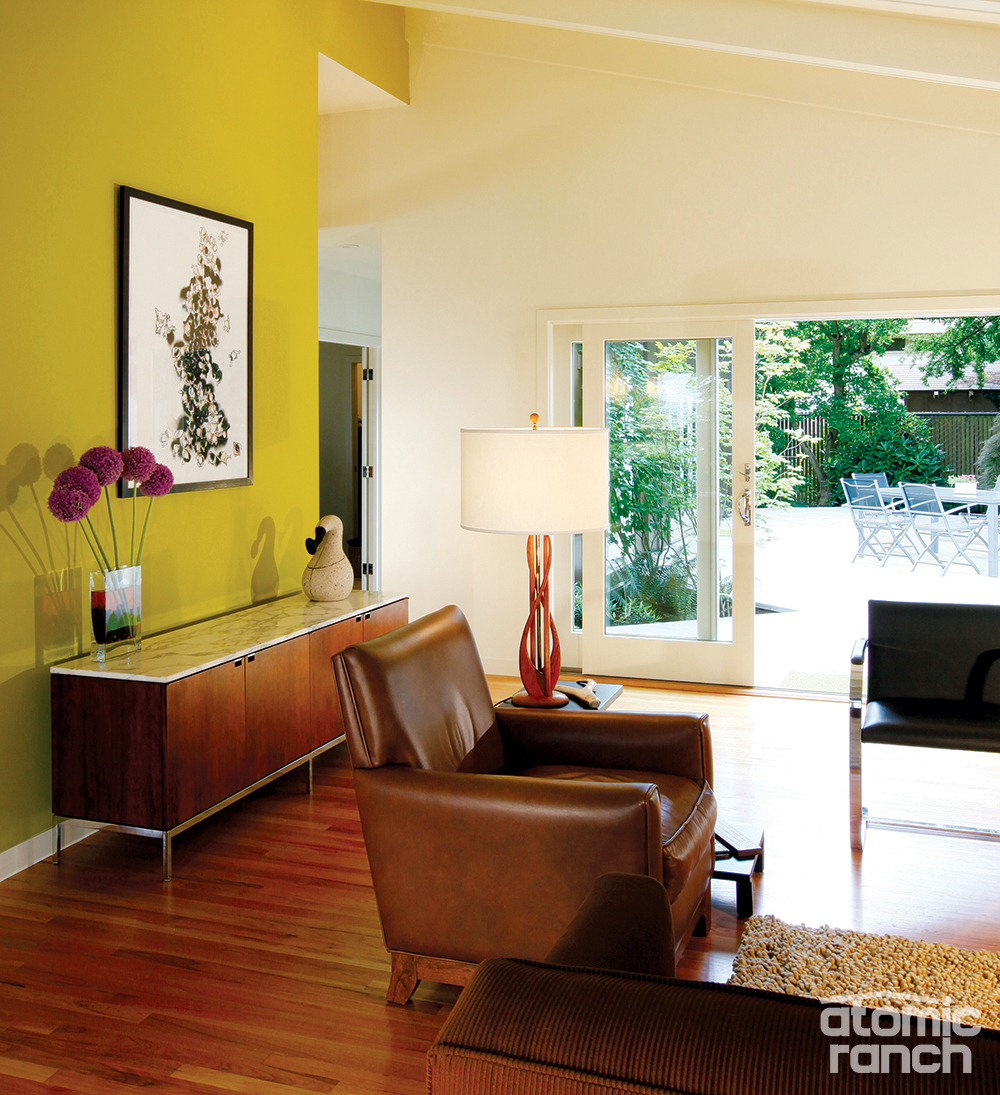
While Tobey and Spence are technically only the second owners, the home had been a rental for several years and suffered from severely deferred maintenance. Worn carpet, outdated heating, vintage electrical, kitchen cabinetry falling apart and original siding in need of intervention pretty much describe the condition. “I could have got $5 in beer bottle deposits when we cleaned out the house,” Spence jokes.
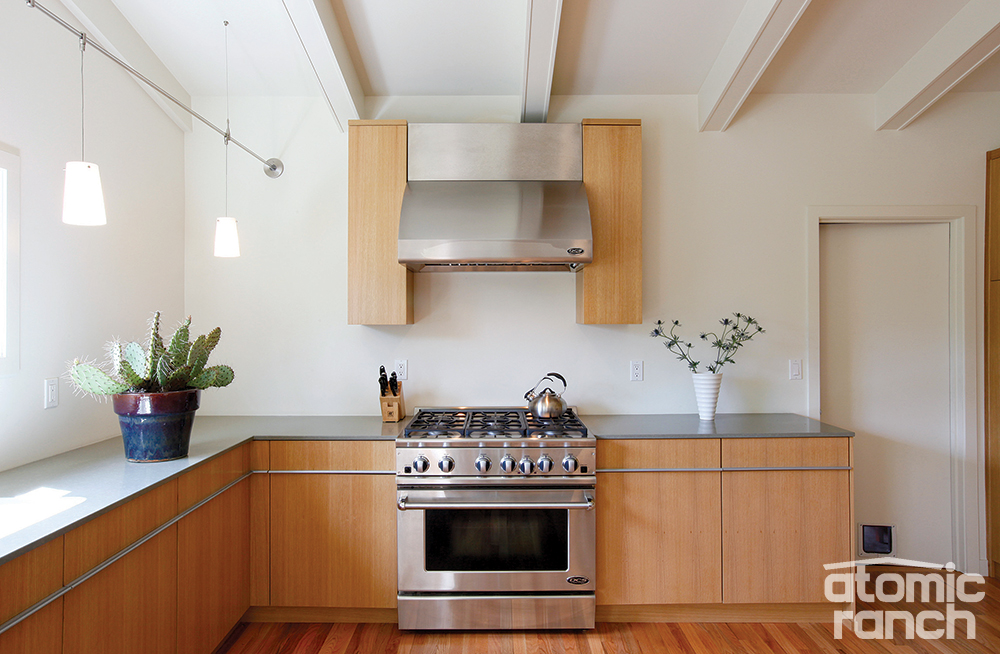
The 7-month project included new HVAC, electrical and plumbing systems, as well as insulation, new sheetrock and exterior siding. A 560-square-foot master suite addition at the rear brought the home’s square footage up to 1,710. Enlarged doors and windows, a custom kitchen with white oak cabinetry and all new hardscape in the backyard round out the list and give an idea of the work involved.
“We gutted the whole house except for the original studs and the mahogany panels on the [living room] north wall,” contractor Lackey explains. “Once you open up the walls, things like earthquake retrofitting make sense. At that point, it would be a disservice not to do a complete renovation.”
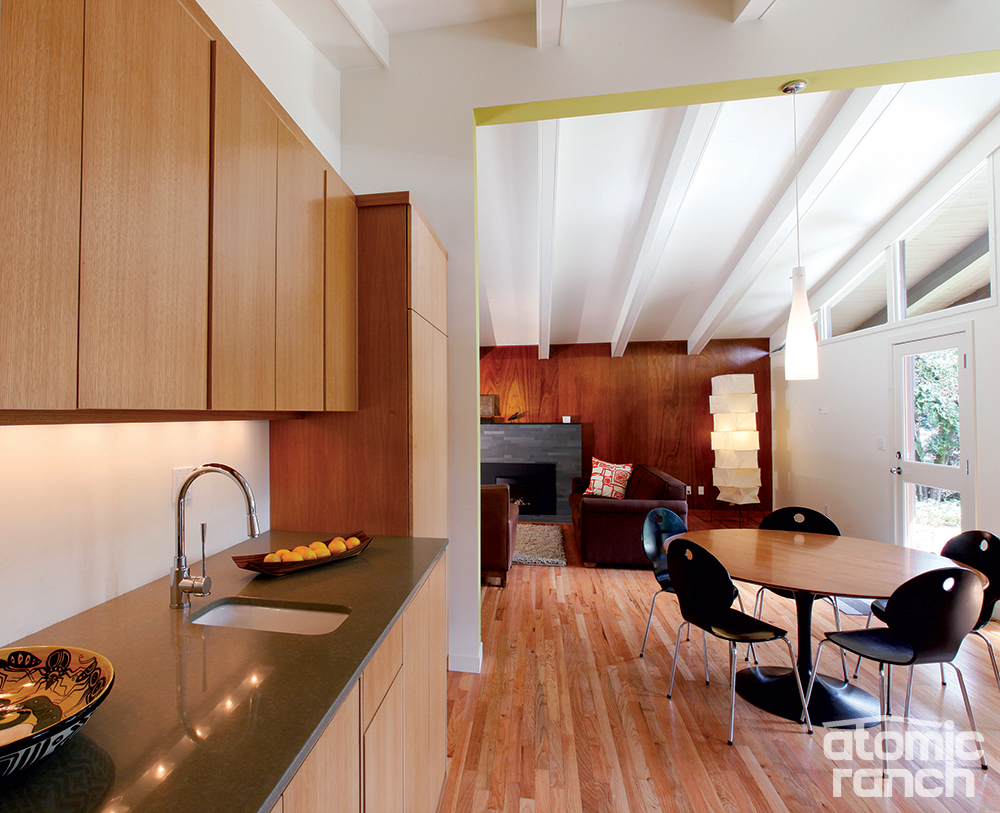
“I can’t remember who can claim the idea for the master, but I know it came up very quickly the first time we walked through the house. The footprint was just too small,” Tobey says. At just a little over 1,100 square feet, the two-bedroom, one-bath house didn’t have a single window looking out to the underused backyard.
“It’s a small addition with a vaulted ceiling and a slightly higher roofline that still keeps with the design of the existing house,” Lackey says. “Since we replaced all of the exterior siding, it ties in nicely. Some of the old beams were reused on the exterior trim, and reclaimed flooring was sistered in to the red oak of the original house. A bank of sliding glass doors and a skylight in the bathroom give them plenty of natural light.”
Tobey says she gained valuable insight from the experience that she now applies to clients. “The remodeling process has a poor reputation for good reason. It’s not your intention at first, but one thing leads to another and you soldier on. It’s influenced our opinion of buyers who think lightly of a large remodel—we spend a little more time warning them to think through what that really means.”
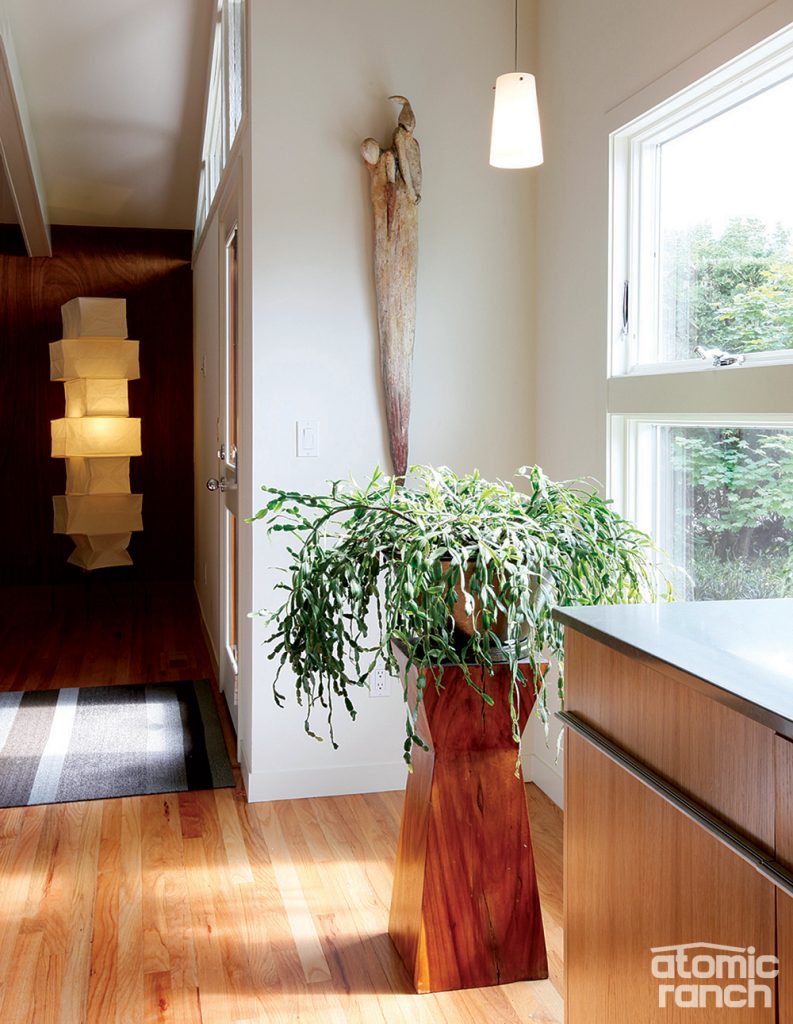
The finished house feels very open and spare, even spartan, but that’s just how they wanted it. “We have a good friend in a wheelchair. We didn’t design it for him, but the thought of making it accessible was a pretty neat thing,” Spence remarks. “It’s our belief that a house this easy to modify should be made that way. It was an opportunity and we owed it to the house.”
Tobey adds, “The ADA modification was a huge component of our plan. We knew my father faced mobility issues, but now my parents always stay here when they visit.” To that end, the home is strictly one level, with opened up doorways, a wide hall, roll-in shower, minimal thresholds and zero step-down to the paved back yard.
Beyond the universal design, the home speaks to their feelings about “stuff.” “With this new economic climate I read more articles about people living in a smart space rather than living in a giant space. The urge to simplify is gaining and people are looking at the way Europeans are living,” Tobey says.
“We see people come back from abroad and, instead of complaining or being scandalized by how small a footprint people are living in, they say it’s so cool to open a drawer and there is a rice cooker and a little toaster oven, and you can make your whole meal right there. People here in Portland will stop at a farmer’s market for a great loaf of bread instead of stocking up at Costco with four loaves they’ll freeze.”
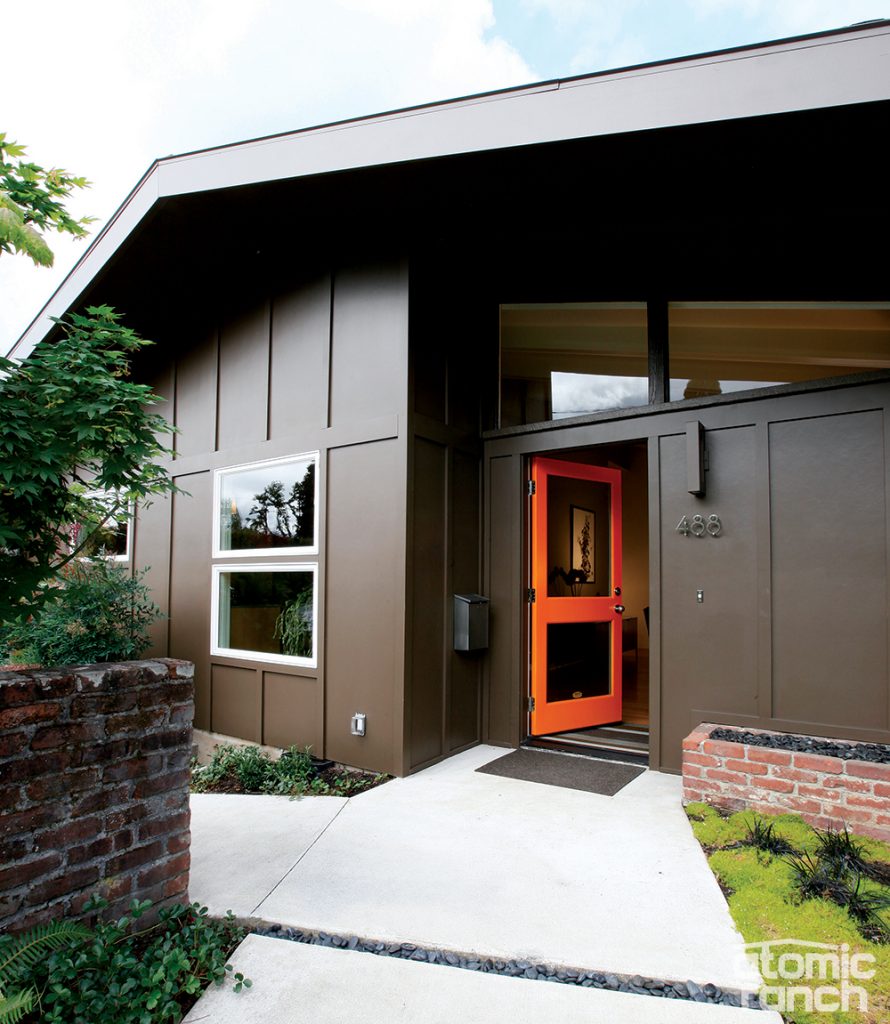
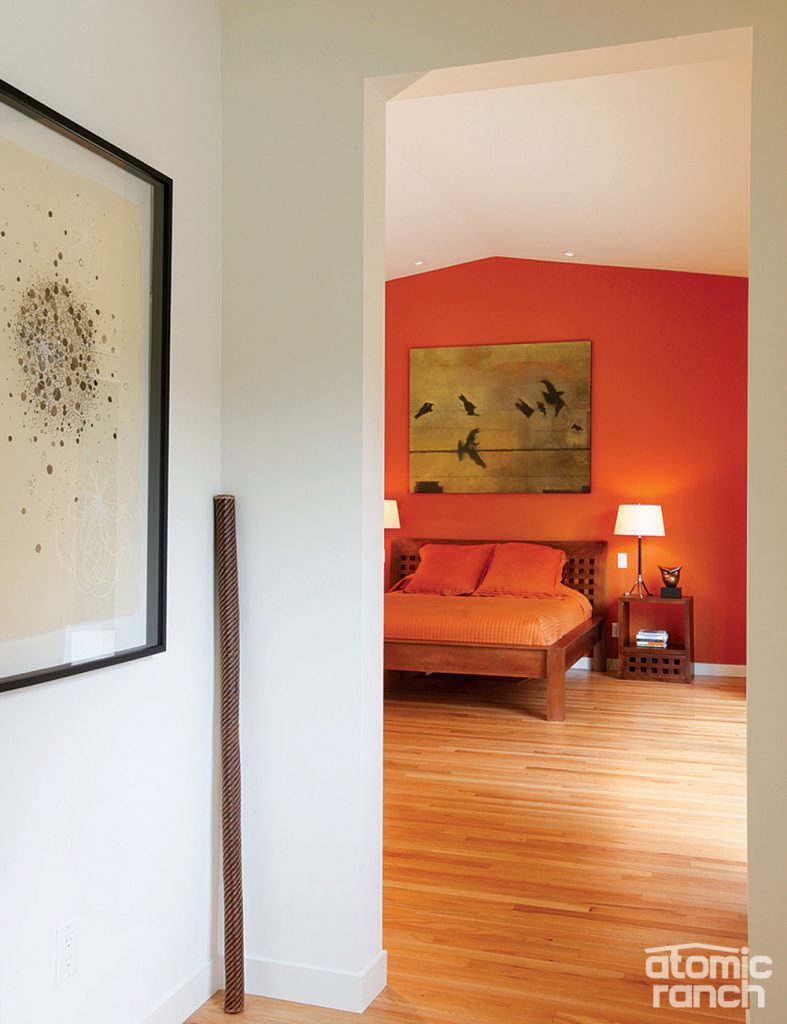
It should be no surprise that realtors like to look at houses. Spence and Tobey will book extra time on vacations to tour real estate listings and, midway through the renovation, they visited Arapahoe Acres, near Denver. The topography of that subdivision gave them an appreciation of siting and hardscaping that they applied to their own home.
The original backyard had a seven-inch step down from the house and reflected typical ’50s landscaping: some mature plantings surrounded by toasted grass and broken concrete. Working with Barbara Hilty Landscape, they added an expansive patio, curved borders and a reflecting pond, while retaining a sizeable Japanese maple, camellias and rhododendrons. Out front, with the exception of the original brick half wall, native Northwest plants and new wide Steve Schoffman, design link concrete pads and paths define the front entry, as well as that knockout orange door.
After the 1956 house was stripped down to the studs, HardiePanel vertical siding and battens of radiata pine formed the new exterior. A smooth concrete walk from the driveway addresses the homeowners’ interest in ADA-compliant design, while the path from the curb has decorative gaps filled with Mexican pebbles. The orange Simpson door is a promise of modern things to come.
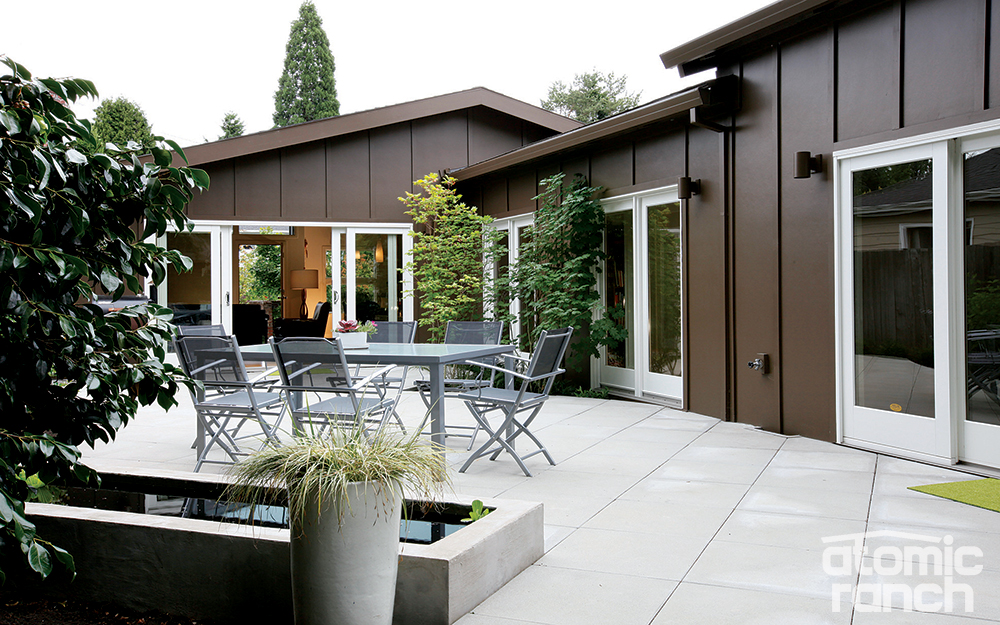
The last words go to the happy homeowners. “I give a ton of credit to Jeanne,” Spence says. “I tend to just say things like, ‘The interior should communicate with the exterior and walls should be transparent,’ but Jeanne says, ‘This hallway is nice and wide; how about putting in some glass and we’ll have more light?’”
Tobey shrugs the praise off. “I didn’t expect how beautifully it turned out—the ideas we gave skilled people were a seven and they delivered a 10.”

